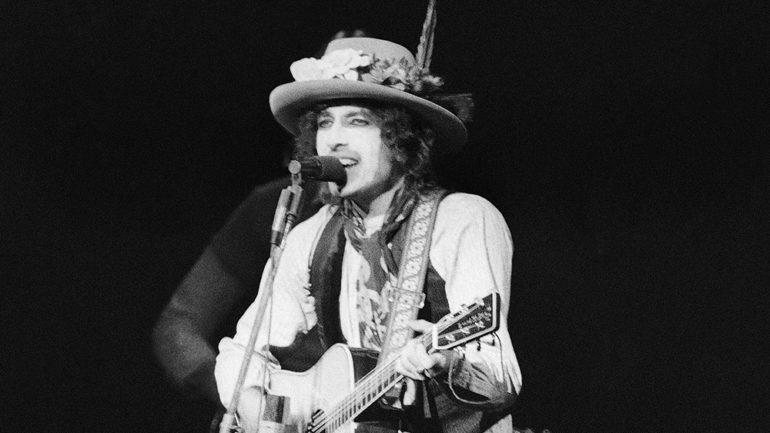Martin Scorsese, Musicians Talk Bob Dylan at ‘Rolling Thunder Revue’ Film Premiere
By Phil Gallo
LOS ANGELES (Variety.com) – Bob Dylan doesn’t provide Martin Scorsese with any easy answers regarding his unorthodox 1975 tour of the Northeast and Canada billed as the Rolling Thunder Revue.
“I don’t remember any of it,” Dylan says, decades later, in “Rolling Thunder Revue: A Story by ,” the director’s new documentary on the tour. “What do you want to know?”
And with that, Scorsese blends the reality of a massive touring ensemble than included Joan Baez, Joni Mitchell, Ramblin’ Jack Elliott, Allen Ginsberg, Roger McGuinn and a 10-piece band with commentary and characters who supply oral histories that are equally illuminating and elusive about the actual truth. Rather than deliver a chronological document about America and Dylan’s tour in the fall of 1975, Scorsese allows the mystique to remain.
“The reason we have myths is because they are timeless and they speak to our human condition,” Scorsese told Variety prior to the premiere of “Rolling Thunder Revue” at Alice Tully Hall in New York Monday (read Variety‘s review of the film here .). “It could be a myth from ancient Syria or certainly from Greece and Rome, and it means something to who we are as human beings. I think [Dylan’s] words touch us” in a similar way.
Dylan’s intense performance of “Isis,” which he wrote with Jacques Levy, in Montreal in December 1975 was very much a starting point, Scorsese says. There’s a lyric in it that could almost summarize the film: “He said, are you lookin’ for somethin’ easy to catch?/ I said, I got no money he said, that ain’t necessary.”
More than just the lyrics, Scorsese notes, “every time he’s saying it, it’s slightly different — the phrasing, the intonation and tone of the voice, the pitch. So it’s always new. We don’t know what rhythm it’s going to be, and you can understand it some of the time, depending on the sound system. The way he shapes the words, like a sculptor and a painter. That’s fantastic.”
Scorsese covered Dylan’s rise in the 2005 documentary “No Direction Home” and three years later, started to talk with Dylan’s manager Jeff Rosen about exploring later chapters in a new film. Plenty of footage from the Rolling Thunder existed, as Dylan had shot the tour and added an improvised storyline that became his confounding, four-hour epic “Renaldo and Clara.” Rosen set about bringing together participants to share memories — and perhaps provide stories that blend fantasy and recollection.
Scorsese started to lay out the film, but had to put it on hold. In that decade, Scorsese says he doesn’t quite remember why some people — most notably Dylan’s wife Sara — were left out of the picture.
“The first footage I saw was in 2008,” he says after giving a shrug as to how he decided who made the cut among the interviews. “I don’t remember if we had any refusals, it’s been such a long time. I should say, though, these elements came together over a period of time. There are some people who were really willing and very happy to be participating.”
Among them are the violinist Scarlet Rivera and guitarist David Mansfield. Both of them had informal auditions — Mansfield in a club gig in the early spring of 1975 and Rivera who was spotted walking with a violin case as Dylan drive by that would lead to an impromptu jam and eventually a performance with Muddy Waters before getting Dylan’s seal of approval.
“My life was kind of mysterious ‘cause I was young and I was very aloof and withdrawn, and that was a perfect combination,” Rivera said. “It was destiny, divine intervention, that made him screech to a stop and ask me about my violin.
As for the audition, “he didn’t play any songs that I could recognize. I mean, he really wanted to test my ability by playing nothing that I would recognize. He didn’t make it easy by saying, ‘Play “Blowin’ in the Wind” for me now’.”
Mansfield says longtime Dylan associate Bobby Neuwirth was “the unsung hero of this entire enterprise. He and Bob together came up with the entire idea for this sort of traveling circus. I sat in with him at a club date he had in [Greenwich] Village, and we connected musically. At one point he called me up to ask, ‘You free in September? I can’t tell you what it is but you’ll have a good time’.”
Scorsese shows the genesis of the Revue with superb footage of a young, relatively unknown Patti Smith and rehearsals in odd spots — a hotel lobby during a mah-jongg tournament — before the entourage hits the stage for three-hour-plus shows in venues such as the Harvard Square Theater, Forum de Montreal and Technical University in Lowell, Mass., where Dylan and Ginsberg visit Jack Kerouac’s grave. Eventually the plight of imprisoned boxer Rubin “Hurricane” Carter enters the picture.
“The spirit of that world,” Scorsese says, “the promoters, the politics, the people that hang around as friends. And through all of that, you have the beauty of the art. I think it’s inspiring and I hope that younger people who see today [believe] that such a thing could still happen.
“There’s one scene in the film where we see a young woman in the audience, after the show was over, break down and cry,” he continued. “It’s very moving. She was very moved —and it’s not only by the songs that deal with social issues.”
The film premieres Wednesday on Netflix.

